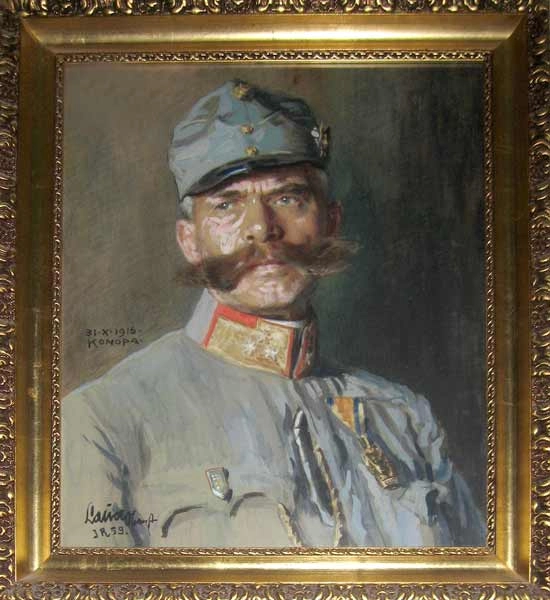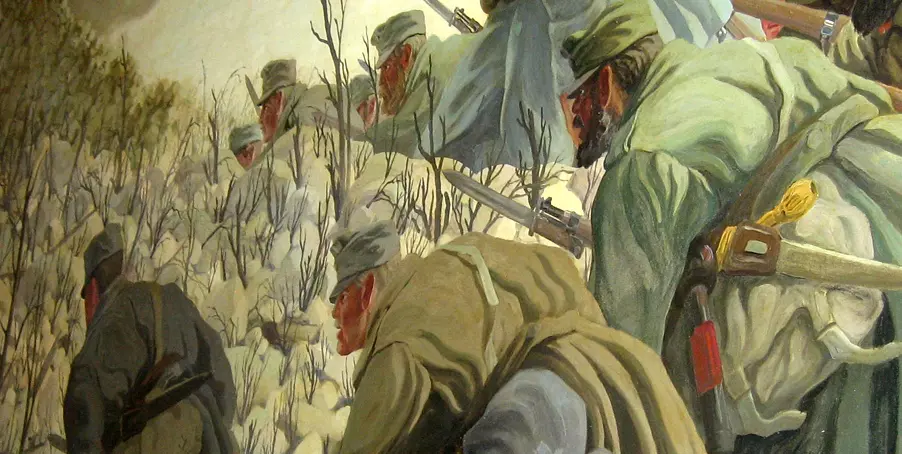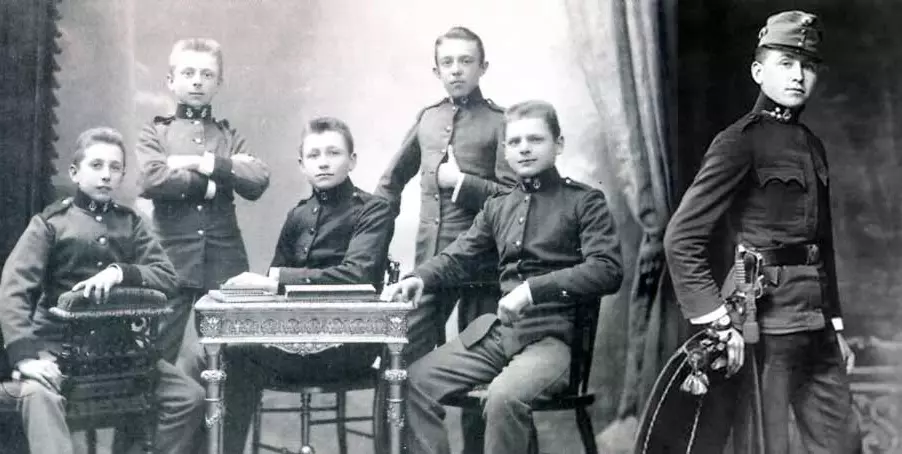A brief history of the Rainer Regimental Museum
Since the year 1924, the Hohensalzburg Fortress has been given the honourable role of housing the Rainer Regiment Museum, preserving the history and memory of Salzburg’s former home regiment, the Imperial Austro-Hungarian Infantry Regiment “Archduke Rainer” No. 59.
 At the beginning of the First World War, the then regiment commander Lieutenant Colonel Maximilian Lauer ordered items such as weapons, uniforms, photos, trophies etc. to be collected and used for establishing a memorial hall. In the beginning of 1918, Colonel Lauer was able to obtain two rooms in the third floor of the central building of the Hohensalzburg Fortress to be used for the Rainer Regiment Museum.
At the beginning of the First World War, the then regiment commander Lieutenant Colonel Maximilian Lauer ordered items such as weapons, uniforms, photos, trophies etc. to be collected and used for establishing a memorial hall. In the beginning of 1918, Colonel Lauer was able to obtain two rooms in the third floor of the central building of the Hohensalzburg Fortress to be used for the Rainer Regiment Museum.
Museum opens in 1924...
After the war ended in 1918, former Rainer soldiers eagerly assisted the museum construction which continued until it officially and ceremoniously opened in 1924 by the then provincial governor, Dr Franz Rehrl.
The regimental museum consists of a total of eight rooms. Together they give a chronological account of the history of the Rainer regiment from its foundation in 1682 until the end of the first World War in 1918.
- Heritage preservation and special exhibitions, access to the Memorial Chapel
- Areas of military engagement, Napoleonic Wars and bourgeois revolution (1848)
- Restoration era and late 19th Century ("Gruenderzeit")
- World War One, regimental march ("Rainermarsch")
- War and the arts
- Southwestern front, telephony exchange
- Front in the mountains — rocks and ice
- Military Heritage preservation, support of war victims, film
In 2016 two especially large rooms were adapted both structurally and in a pedagogical sense so as to be suitable for special exhibitions. One of these will focus on the time after 1918, in as much as it involves the Rainer regiment.
Three life-size (three-dimensional) dioramas – i.e. two World War I combat positions of Austria-Hungary's southwestern front and one of the front in Galicia (in present day Ukraine) – are essential exhibits.
In addition, the museum has at its disposal three rooms that are very well suited as depots. They are being used for storing and preserving historical weaponry, traditional uniforms, pictures, etc.
The Defence Ministry as well as the Armed Forces of both the First (1918 – 1938) and Second Republics (after the reestablishment of an Austrian army in 1955) have continuously and strongly supported the dedication of both the regimental museum and the "Rainerbund” (Rainer federation) to looking after the tradition of the regiment (see also "History, Tradition“).
see also LINK „TRADITION"













